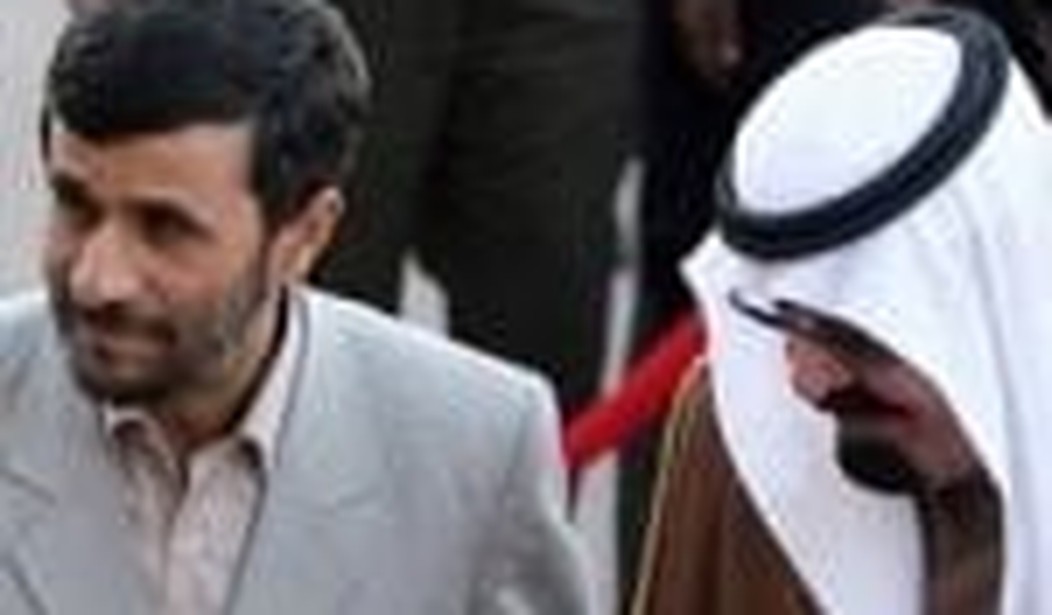What’s your poison: Saudi Arabia or Iran?
That is a choice the next U.S. president must make. In strategic gist the West too is at a point where its myriad of religious-political establishments must decide what wings of Islam, those sponsored by the Saudis or the Iranians, are adept for coexistence.
That a choice has to be made is clear from the savage wars between Shiites and Sunnis and those tearing at Sunni Muslim societies as well as nipping at the heels of Islamic democracies from Turkey to Pakistan and even the Muslim communities of Europe and America. That, too, is a war between Iran and Saudis over corpses of others.
A thorny choice indeed — akin to asking “what’s your poison?” But it is a realpolitik choice of the kind Henry Kissinger mastered so well in the grand war on Communism. Whichever way we cut it, life with weaponized Islam is here. While both Saudi Arabia and Iran fan its flames, only Iran can douse that fire.
Ever since its historic revolution of 1978-1979, Iran has emerged as an invigorating force behind ascending Shiism. But it has also reached emotionally and deeply into the much larger community of Sunnis that forms a majority of the 1.2 billion Muslims.
Why? The ayatollahs refashioned a crumbling revolutionary world of leftist-socialist Arab radicalism into an attractive pseudo-Islamic package. Ayatollah Khomeini, the founder of the revolution, and the vast, sophisticated clergy of Iran assembled the zest of Che Guevara, Mao, the European left, and Arab nationalism, all neatly wrapped into a chador-enclosed religiosity. The model is pragmatically revolutionary rather than theologically fanatic. It is in fact a tool to renegotiate Iran’s geopolitical repositioning rather than a heavenly quest.
That it is appealing is undeniable.
Arabs and Muslims have joined in the transporting élan, including great masses of Iran, Iraq, Lebanon, the Palestinians, and enthusiasts among Muslim lands as far as Indonesia, Malaysia, Pakistan, and Chechnya.
Faced with this existential as well as cultural and religious challenge, Saudi Arabia responded by digging up its ossified version of Sunni Islam, the very antithesis of change.
Since 1979 it applied its oil money assiduously to export that version of militancy to the world’s Muslim communities as the antidote — Osama bin Laden being its most famous product. Iran of course gave us the ayatollahs’ American diplomatic hostages and assorted mayhem. The difference is control. Iran has it over its crowds. Saudi Arabia lost it.
In many ways the two models are dinosaurs. But in their behemoth battle they trampled the delicate tissue of secular Islam — what pundits refer to as moderate Islam — which dominated large Islamic nations. In those places militancy has now eclipsed moderate culture. In Egypt a Saudi Wahhabi veil totally envelops that country, which once led the Arab world.
Beneath that process, Iran’s Islamic fundamentalism is eminently negotiable. It rests on 5,000 years of civilization, which broadens its parameters. It is layered on top of Persian empires, a wealth of culture, literature, poetry, art, and a vastly sophisticated population, where women work and drive.
Tehran is clearly pleased that Iraq’s 15 million Shiites dominate their government and that Lebanon’s one million Shiites and their Hezbollah militia have proven themselves. It celebrates Shiites in Bahrain and several million more in pockets from Pakistan to Saudi Arabia, along with wealthy merchant communities all over the Persian Gulf region. But it is not intoxicated by it and considers them tools of the trade. You can dialog with that.
By contrast, what exists in Saudi Arabia is a culture and religious model with no options other than the inflexible vision we have come to know as Islamofascism. It rests on a nomadic desert-raiding culture combined with literal application of 7th-century Koranic text, designed to avert challenge and insure submission. What you see is what you get overseas. Both regimes are exporting aggression, but while Iran yearns for modernity, Saudi Arabia is threatened by it.
It reflects the greater divide between Shiism and Sunnism parting at the very concept of ijtihad, roughly translated as “intellectual initiative.” Shiism encourages debate and questioning. The rewards for Shiite clerics who thrive at ijtihad are an increase in followers and financial donations. The Saudi royals and theologians view the very idea of debate as apostasy, just as they see Shiism itself. Shiites only want everyone else to see the light.
If, as is the case, we are fated to deal with weaponized Islam, Iran’s version and its levers of control over it are the better choice.
American presidential contenders fuming over whether to talk or not to talk with the mullahs should ponder this reality.
Youssef M. Ibrahim, a former Middle East correspondent for the New York Times and Energy Editor of the Wall Street Journal is a freelance writer and Mideast political risk consultant based in New York.








Join the conversation as a VIP Member